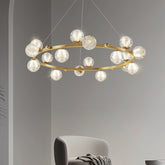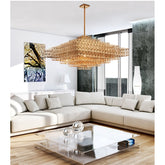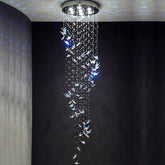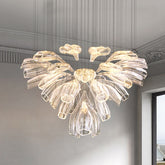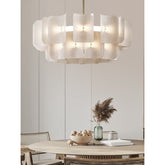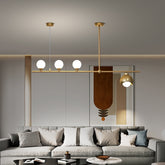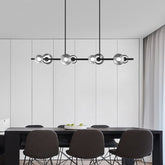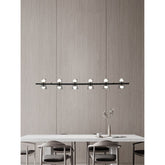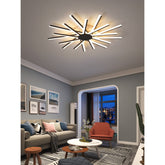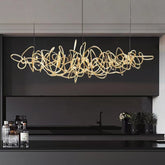How to Use Picture Lights and Accent Lamps to Highlight Your Art Collection
Art collections are most of the time a personal statement, often reflecting one's taste, history, and creativity. Proper lighting plays a pivotal role in showcasing these pieces, making sure that every brushstroke and color nuance is visible to the naked eye. Picture lights and accent lamps are essential tools in this scene, offering both functional illumination as well as aesthetic enhancement. This comprehensive guide will go into how to use these lighting solutions to highlight your art collection effectively in 2024 & upcoming years.
Understanding the Importance of Lighting in Art Display
Before diving into the specifics of picture lights and accent lamps, it is crucial to understand why lighting is vital for art display. Proper lighting enhances the visual appeal of artwork, emphasizes details, and creates an atmosphere that complements the piece. Conversely, poor lighting can distort colors, create glare, and detract from the viewer's experience.
The Role of Lighting in Art Perception
According to modern science, lighting affects how we perceive color and detail though our brains. Natural light changes throughout the day, altering the appearance of artwork. Artificial lighting, on the other hand, provides consistent illumination, allowing for a controlled viewing experience. The type of light, its intensity, and direction all contribute to how an artwork is perceived.
Preserving Art with Proper Lighting
Beyond aesthetics, proper lighting is also crucial for preserving artwork. Ultraviolet (UV) and infrared (IR) radiation from certain light sources can cause fading and damage over time. Therefore, choosing the right lighting that minimizes these harmful effects is essential for the longevity of your art collection.
Picture Lights: A Detailed Overview
Picture lights are specifically designed to illuminate artwork. They are mounted above or around the frame, directing light onto the piece. Here’s a detailed look at how to choose and use picture lights effectively.
Types of Picture Lights
- Direct-Wired Picture Lights: These are hardwired into the wall, providing a clean and seamless look. They are ideal for permanent installations where aesthetics are a priority.
- Plug-In Picture Lights: These are more flexible and can be easily installed and moved. They are perfect for renters or those who frequently rearrange their art collection.
- Battery-Operated Picture Lights: These are cordless and offer the utmost flexibility in placement. They are excellent for spaces without electrical outlets nearby.
Selecting the Right Size and Style
The size and style of the picture light should complement the artwork and the room’s decor. Here are some tips:
- Size: The light should be approximately half to three-quarters the width of the frame. For larger pieces, consider using multiple lights.
- Style: Choose a style that matches the frame and room decor. Traditional lights with brass or bronze finishes work well in classic settings, while sleek, modern designs are suitable for contemporary spaces.
Light Source and Color Temperature
The type of light source and its color temperature are critical for showcasing art:
- LED Lights: LED lights are energy-efficient, produce minimal heat, and have a long lifespan. They are available in various color temperatures and do not emit UV radiation.
- Color Temperature: The color temperature of the light affects how the colors in the artwork appear. A color temperature of 2700K to 3000K (warm white) is often recommended for artwork as it provides a natural and flattering illumination.
Installation Tips
- Positioning: Mount the light approximately 7-9 inches above the frame. The angle should be around 30 degrees to minimize glare and shadows.
- Adjustability: Choose lights with adjustable arms or heads to fine-tune the illumination.
- Dimmers: Installing dimmers allows you to control the light intensity, ensuring the artwork is perfectly lit under varying ambient conditions.
Accent Lamps: Enhancing the Ambiance
Accent lamps, unlike picture lights, are not attached to the artwork. Instead, they are placed around the room to provide ambient or focused lighting that highlights the art indirectly. Here’s how to use accent lamps effectively.
Types of Accent Lamps
- Table Lamps: Placed on tables or shelves, these lamps provide focused lighting that can be directed towards the artwork.
- Floor Lamps: Tall lamps that can illuminate larger areas or provide uplighting that bounces off the ceiling and onto the artwork.
- Wall Sconces: Mounted on the wall, these lamps provide ambient or directional lighting that can enhance the art’s visibility and the room’s decor.
Choosing the Right Lamp
When selecting accent lamps, consider the following factors:
- Size and Scale: The lamp should be proportionate to the space and the artwork. A small lamp may get lost in a large room, while an oversized lamp can overpower a small piece of art.
- Style: The lamp’s design should complement the room’s decor and the artwork’s style. A cohesive look enhances the overall aesthetic appeal.
- Light Source: LED bulbs are preferred for their efficiency and longevity. Choose bulbs with appropriate color temperatures to highlight the artwork effectively.
Placement and Positioning
The placement of accent lamps is crucial for creating the desired effect:
- Table Lamps: Place table lamps on side tables, consoles, or shelves near the artwork. Ensure the light beam is directed towards the art without causing glare.
- Floor Lamps: Position floor lamps in corners or behind seating areas to provide indirect lighting that highlights the art. Uplighting floor lamps are particularly effective for large pieces or high ceilings.
- Wall Sconces: Mount wall sconces on either side of the artwork or in a pattern that complements the room’s layout. Adjustable sconces can be directed to focus light precisely on the art.
Layering Light
Layering light involves using multiple light sources to create a dynamic and visually appealing space. Combine picture lights, accent lamps, and ambient lighting to achieve a balanced and harmonious look. This technique ensures that the artwork is highlighted effectively without overwhelming the room.
Practical Examples and Case Studies
To illustrate the principles discussed, let’s look at some practical examples and case studies.
Example 1: A Contemporary Living Room
In a contemporary living room with a large abstract painting, a combination of picture lights and accent lamps can create a stunning display.
- Picture Light: A sleek, direct-wired LED picture light is installed above the painting. The light’s color temperature is set to 3000K to enhance the painting’s vibrant colors.
- Accent Lamps: Two modern table lamps with adjustable heads are placed on side tables flanking the painting. These lamps provide additional focused lighting that enhances the artwork without creating glare.
- Layering: The room also features recessed ceiling lights with dimmers, allowing for control over the ambient lighting. This setup ensures the painting is well-lit while maintaining a comfortable and inviting atmosphere.
Example 2: A Traditional Study
In a traditional study with antique portraits and classic landscapes, the lighting setup emphasizes elegance and warmth.
- Picture Lights: Brass direct-wired picture lights are mounted above each portrait. The warm light at 2700K highlights the details and textures of the paintings.
- Accent Lamps: A pair of classic floor lamps with fabric shades are placed near the seating area, providing soft, diffused light that complements the artwork.
- Layering: Wall sconces with adjustable arms are installed on either side of the largest painting. These sconces can be directed to focus light on the artwork or provide general room illumination, enhancing the overall ambiance.
Case Study: Gallery Installation
In a home gallery featuring a diverse collection of artworks, a strategic lighting plan ensures each piece is highlighted effectively.
- Picture Lights: Battery-operated picture lights are used for smaller pieces, allowing for flexibility in placement. For larger works, direct-wired lights with adjustable arms provide precise illumination.
- Accent Lamps: A mix of table and floor lamps with LED bulbs are strategically placed throughout the gallery. The lamps are chosen to complement the room’s modern decor while providing adequate lighting for the artworks.
- Layering: Track lighting with adjustable heads is installed on the ceiling, allowing for focused lighting on specific pieces. The combination of picture lights, accent lamps, and track lighting creates a dynamic and engaging gallery experience.
Final Words
Proper lighting is essential for showcasing an art collection, ensuring that each piece is displayed to its best advantage. Picture lights and accent lamps offer versatile and effective solutions for highlighting artwork. By understanding the importance of lighting, selecting the right fixtures, and strategically placing them, you can create a visually stunning display that enhances the beauty and impact of your art collection.
Key Takeaways
- Understand the Importance of Lighting: Good lighting enhances the visual appeal and preserves the artwork.
- Choose the Right Picture Lights: Select the appropriate type, size, and style to complement your artwork and decor.
- Utilize Accent Lamps: Use table lamps, floor lamps, and wall sconces to provide ambient and focused lighting.
- Layer Light: Combine different light sources to create a balanced and dynamic lighting scheme.
- Consider Practical Examples: Look at real-life applications to inspire your lighting setup.
By following these guidelines, you can transform your art collection into a captivating focal point in your home, ensuring that each piece is displayed in the literal best possible light.












































































































